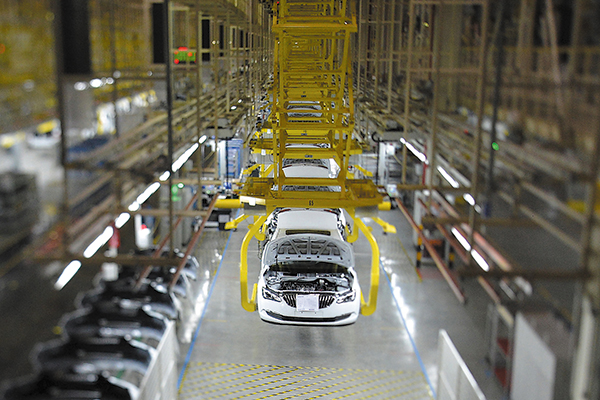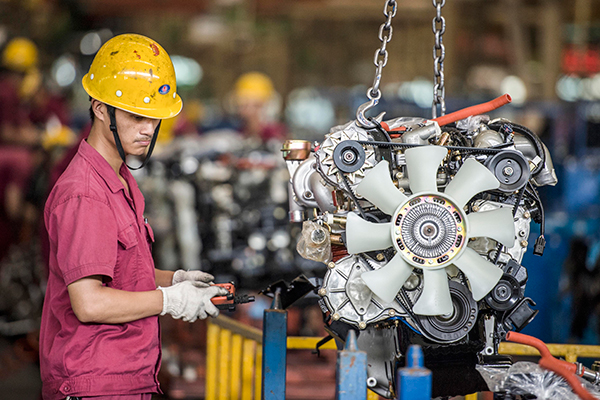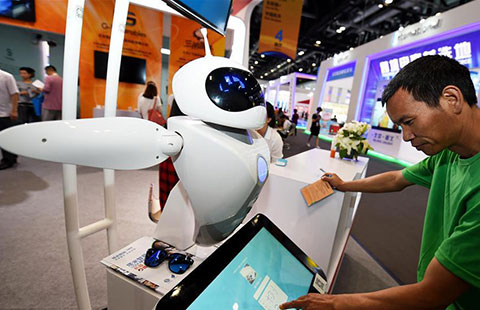China's car market yet to peak, says trade association
By Li Fusheng (China Daily) Updated: 2016-05-30 09:26
Vehicles roll off an assembly line in Wuhan, Hubei province. [Photo/China Daily]
Association expects automobile industry to make progress over next five years

"I estimate it will not reach the peak until 40 million units are produced and sold annually, which means every 1,000 people own 400 cars, the level now seen in South Korea," said Dong Yang, executive vice-president of the China Association of Automobile Manufacturers.
The overall auto market has slowed its pace from previous years, when double-digit growth rates were often seen. The sales edged 4.7 percent year-on-year in 2015 but CAAM estimated that the rate will rebound to 6 percent this year, Dong said at an auto forum in Beijing.
He said the central government has demanded local governments lift bans on used cars, which proved a hurdle to sales last year.
LMC Automotive expected passenger car sales to grow 8 percent year-on-year in 2016 and then gradually slow to 5 percent year-on-year in 2020.
Dong said reasonable growth "should not be and will not be too fast" and should stay consistent with China's GDP growth.
He believed automakers in China will see the most rapid progress in their capacity of innovation from 2016 to 2020, which is the country's 13th Five-Year Plan period, because "we will see more money spent on innovation during these five years".
Dong said the auto industry should be a major player in the "Made in China 2025" plan, which the central government unveiled last year to improve manufacturing and shift the country away from low-end manufacturing to more value-added production.
 |
|
An employee manufactures cars at a company in Hefei, Anhui province. [Photo/China Daily] |
CAAM statistics show that 3.3 million passenger cars bearing Chinese brands were sold in the first four months of 2016, accounting for a 44.3 percent market share, and Chinese SUVs totaled 57.9 percent of the total SUVs sold in the country.
An said Chinese cars have been making progress in design and quality over the past years.
A 2015 JD Power study showed that Chinese cars on average had 131 problems in a year, 36 more than foreign brands. In 2008, the difference was 145 problems.
He said many think South Korea has done a good job in developing their own brands, but did not realize that it has taken the country more than 30 years of effort.
"If Chinese brands want to stand out, they must work hard and spare no efforts. It is not practical to build Rome in a day."
He suggested that the Chinese government come up with policies to boost research and development, saying that Chinese carmakers' reliance on foreign engines and transmissions hinders the industry's development.
An also urged Chinese companies to focus on new-energy vehicles and smart cars, saying there is a chance of success in the new wave of car making initiated by internet companies.
- Zoomlion exec says price disagreement led to Terex failure
- China pins hopes on scientific innovation
- Russia seeks to promote EAEU-China economic cooperation: FM
- China, Malaysia promote twin industrial parks for cooperation
- US still tops China's overseas portfolio investment list
- China's manufacturing PMI flat in May
- Chinese retailer tycoon gets jail time commuted by 11 months
- China allows more foreign investment into capital market

















